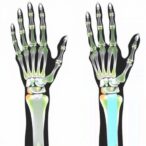
In the ever-evolving landscape of medical education, the use of clinical simulations has emerged as a pivotal tool, particularly in nursing education. A recent study delves into nursing students’ perceptions of clinical simulations designed to improve safe medication administration, shedding light on the potential benefits and challenges associated with this teaching method. As the healthcare environment becomes increasingly complex, understanding the efficacy of educational tools in training future nurses is crucial for enhancing patient safety and improving healthcare outcomes.
The essence of the study lies in the exploration of nursing students’ experiences with clinical simulations. Researchers sought to capture the authentic voices of students regarding how simulations influenced their learning experiences, fostering both theoretical knowledge and practical skills. The overarching aim was to evaluate the effectiveness of clinical simulations and their role in bridging the gap between classroom learning and real-world application. This exploration is timely, given the rising emphasis on competency-based education in nursing.
Central to the study’s findings is the notion that clinical simulations not only bolster nursing students’ theoretical understanding but also enhance their confidence when administering medication. Students reported feeling more adequately prepared to enter clinical settings after engaging in simulated scenarios. This newfound confidence is paramount; the ability to administer medication safely is a critical aspect of nursing practice, and the repercussions of errors can be grave. Hence, positive perceptions of simulations underscore their potential as a transformative educational tool.
However, the study did not shy away from addressing the challenges students encountered during simulations. Some students expressed feelings of anxiety and pressure during simulations, which could detract from the learning experience. This highlights a critical counterpoint; while simulations are designed to mimic real-life scenarios, the stress associated with high-stakes situations can be overwhelming for students. Acknowledging these emotions could pave the way for designing simulations that not only educate but also offer emotional support to learners.
Another compelling aspect revealed by the focus groups was the importance of debriefing sessions following simulations. Students asserted that reflective discussions after engaging in simulations allowed them to process their experiences, learn from mistakes, and solidify their understanding. This finding aligns with existing literature advocating for debriefing as an essential component of simulation-based learning. The opportunity to dissect what went well and what could be improved fosters a culture of continuous learning among nursing students, which is vital in an ever-changing healthcare landscape.
Moreover, the exploration of collaborative learning within simulation settings offered insightful revelations. Students noted that teamwork during simulations mimics the interdisciplinary nature of healthcare, where effective communication and collaboration are key to ensuring patient safety. By engaging in group simulations, nursing students could practice these essential skills in a low-stakes environment, preparing them for the realities of clinical practice where teamwork is crucial.
The qualitative nature of the study enriched the researchers’ understanding of students’ perceptions. Through focus group discussions, participants shared a wealth of personal experiences that quantitative surveys might have overlooked. This depth of insight allows for nuanced interpretations of how simulations can be designed to better meet students’ needs. Future research could further explore these qualitative dimensions, providing a deeper understanding of the long-term impacts of simulation-based learning on nursing practice.
Interestingly, the study’s findings resonate with emerging trends in educational technology. As virtual reality (VR) and augmented reality (AR) systems become more prevalent in nursing education, the implications of the study may extend beyond traditional simulation methods. These technologies have the potential to create immersive learning experiences that engage students and enhance their understanding of complex scenarios. However, careful consideration must be given to integrating technology into the curriculum, ensuring that it complements rather than replaces hands-on experiences.
In conclusion, this study illustrates the multifaceted role of clinical simulations in nursing education, particularly regarding medication administration. While students largely perceive simulations positively, acknowledging the challenges they face is essential for creating effective educational environments. The integration of debriefings and the promotion of collaborative learning are pivotal in maximizing the benefits of simulation-based education. As nursing education continues to evolve, it is imperative to examine these findings and consider how they can inform the ongoing development of curricula aimed at producing highly competent nursing professionals.
Ultimately, the drive for improvement in nursing education is rooted in the desire to enhance patient safety and care outcomes. By embracing innovative teaching methods like clinical simulations and addressing the concerns raised by students, nursing programs can pave the way for a generation of nurses equipped to tackle the complexities of modern healthcare.
Subject of Research: Nursing students’ perceptions of clinical simulation for teaching medication administration.
Article Title: Nursing students’ perceptions about the use of clinical simulation to teach safe medication administration: a focus group study.
Article References:
Alfonso-Arias, C., Llaurado-Serra, M., Rodríguez-Higueras, E. et al. Nursing students’ perceptions about the use of clinical simulation to teach safe medication administration: a focus group study.
BMC Nurs 24, 1075 (2025). https://doi.org/10.1186/s12912-025-03716-3
Image Credits: AI Generated
DOI:
Keywords: Clinical simulation, nursing education, medication administration, focus group study, patient safety.
Tags: bridging classroom and clinical practiceclinical simulation in nursingcompetency-based nursing educationeffectiveness of clinical simulationshealthcare outcomes improvementmedication safety trainingNursing educationnursing student confidencenursing students’ perceptionspatient safety educationpractical skills developmenttheoretical knowledge in nursing



